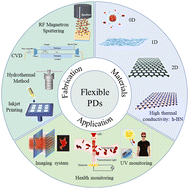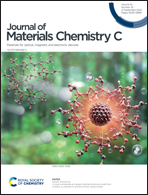Fabrication, material regulation, and healthcare applications of flexible photodetectors
Abstract
With continuous development of nanotechnology and materials science, wearable electronic devices are one of the hot points in nanoelectronics and have attracted extensive attention in recent years. The devices have evolved from single-function to multi-function with innovations in materials and technologies, and meanwhile they are more economic, have low energy consumption, are portable, high-performing, and environmentally friendly. Flexible photodetectors (PDs) are the basic units for the fabrication of wearable electronic devices with specific functions due to their advantages of high flexibility, stable detection performance, and strong mechanical properties. Until now, PDs have been widely used in human health monitoring, biomedical imaging, foldable displays, flexible batteries, and many other fields. In this review, for the first time we present the progress of the fabrication, regulation, and healthcare applications of various flexible PDs. Towards this aim, first we introduce the fabrication strategies of PDs, and then discuss the selection and regulation of different active materials for flexible PDs from the dimensions of materials. In particular, we summarize highly thermally conductive materials that can be used for the thermal management of flexible PDs. Finally, we demonstrate the applications of flexible PDs and look into their future development prospects. It is expected that this work will be valuable for the design and fabrication of flexible PDs and inspire the development of functional nanodevices.



 Please wait while we load your content...
Please wait while we load your content...